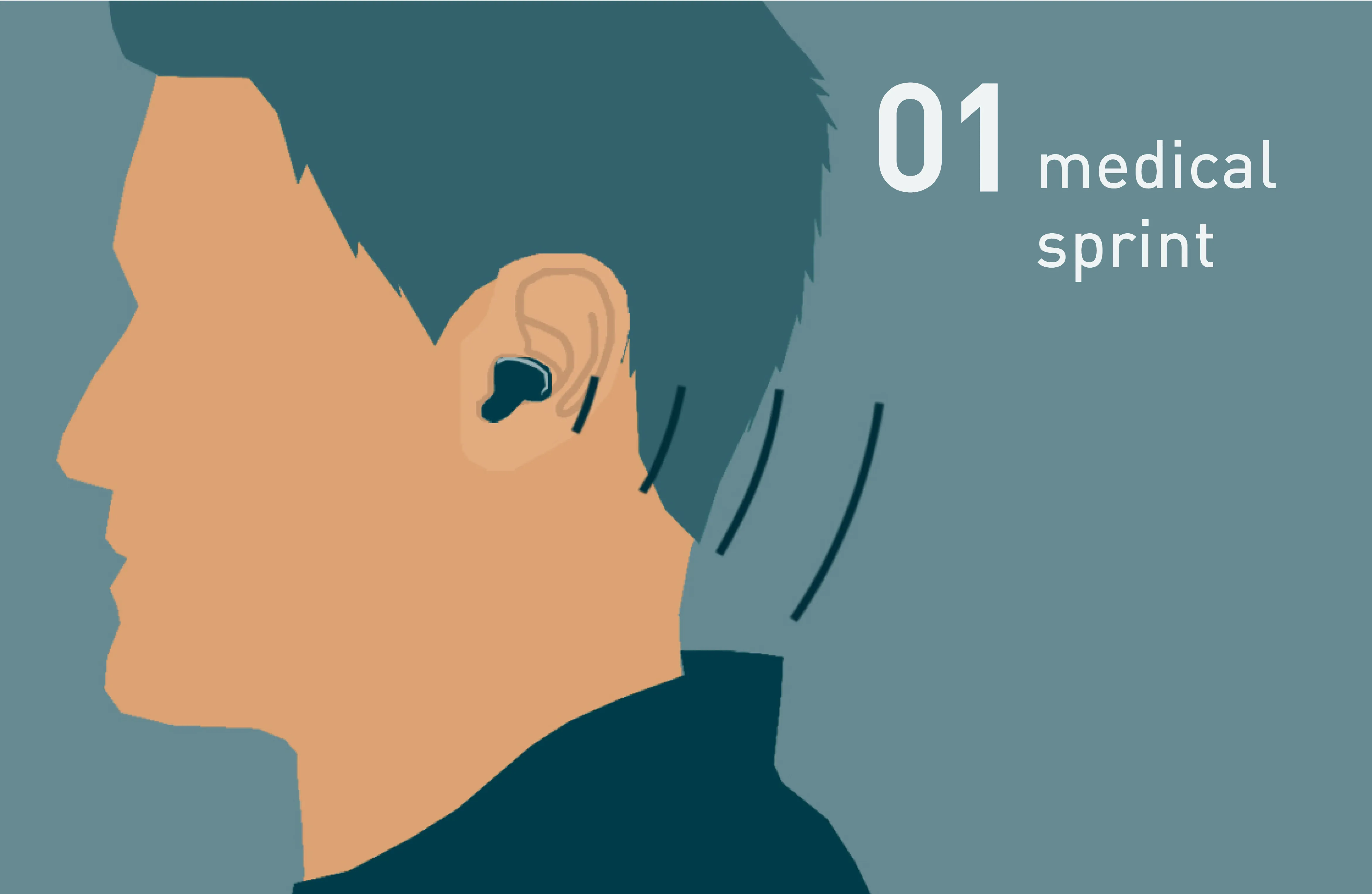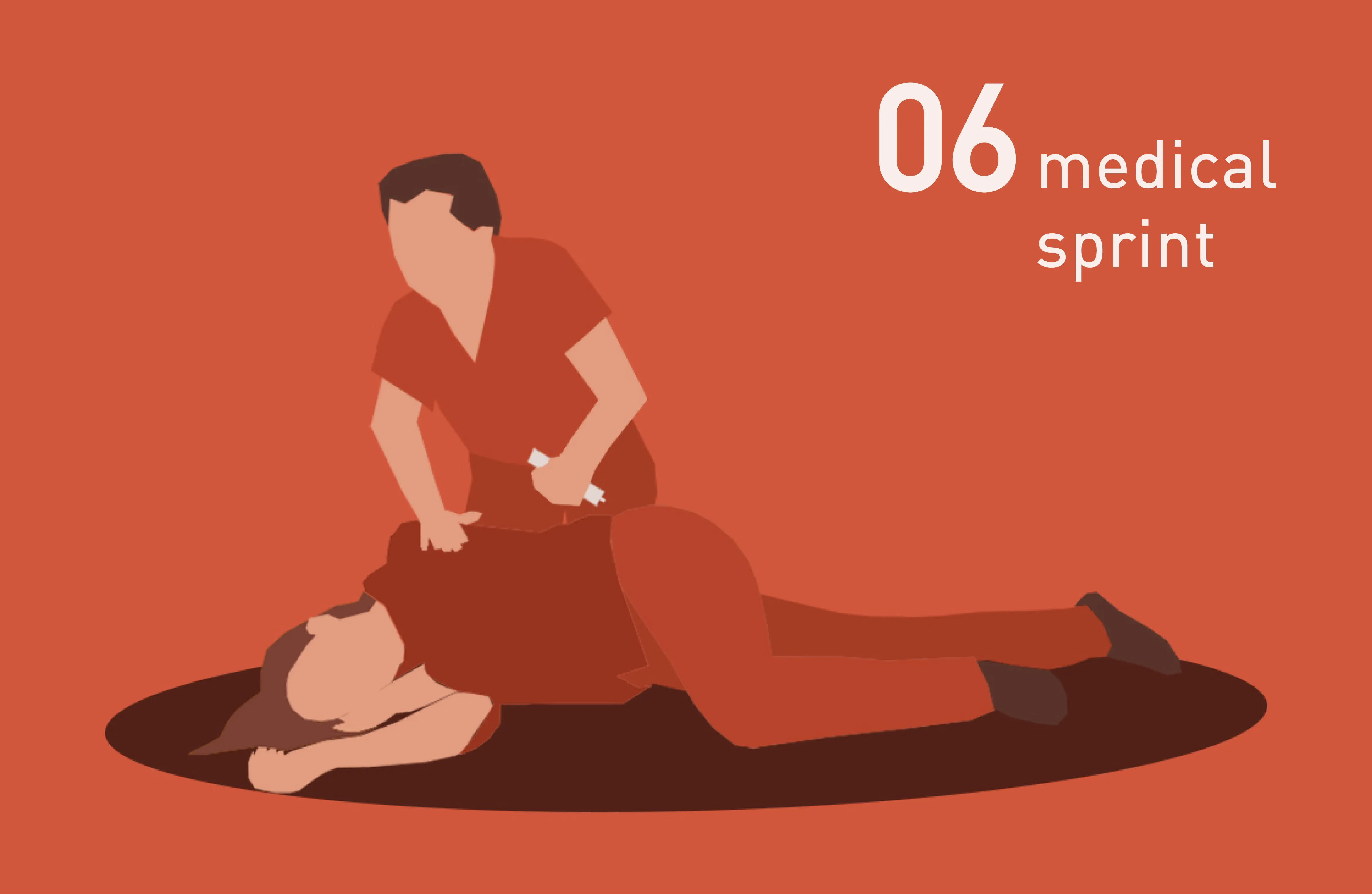Perspective
In-ear wearables: competition for the better design in the ear | Design Sprint 1
Two young designers set out on the same mission: to create a functional, aesthetic and discreet design for in-ear wearables. As identical as the starting point was, as different are the concept results.
For the cooperation project between WILDDESIGN and CiS, Institute for Microsensor Technology from Erfurt, we sent Luca Nisi, a product design student at the Schwäbisch Gmünd University of Applied Sciences, and industrial design student Albert Ibragimov from the University of Wuppertal into the race. Who delivered the better concept for the design and implementation of the technology developed by CiS for in-ear wearables?
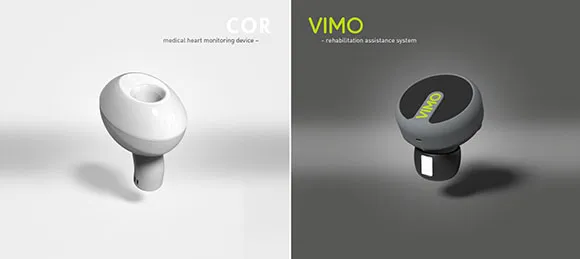
Sensor for measuring several vital signs
The Erfurt-based company has developed a sensor that is particularly small and can measure several vital parameters using the photoplethysmography method (PPG): heart rate and heart rate variability, oxygen saturation (SpO2) in the blood and blood pressure. Three LEDs with different wavelengths are built into this "sensor construct". A photodetector is also integrated, which picks up and measures the reflected rays. The different vital parameters can be measured more precisely using the respective wavelengths. A new and therefore particularly interesting feature of the sensor system is the ability to draw conclusions about blood pressure. This has not yet been possible in this form using an optical method. The technology was therefore fully developed; however, there was a lack of product-related discussion for this sensor technology in order to be able to start possible product developments on this basis in the future.
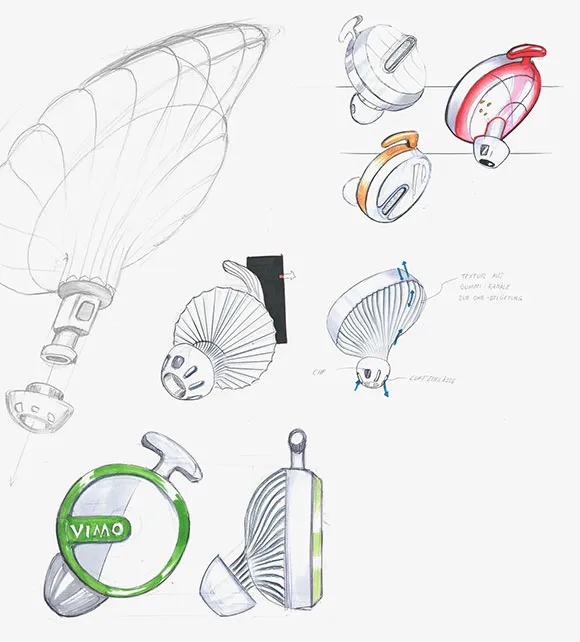
Milestone in medical technology development
CiS is currently researching how to measure the various vital parameters (blood pressure, oxygen saturation SpO2, heart rate / heart rate variability) so precisely that they are sufficiently accurate to be used reliably in medicine. In collaboration with an ENT specialist, the research institute has been able to identify a location in the ear canal that is planar in many people and can therefore be used for continuous PPG measurement with high signal quality. This is an important milestone in the development of the technology, as it means that accurate measurements are now possible.
The ability to determine vital parameters very precisely therefore provided the innovative technical basis for the project. It was the product designers' task to ensure the further implementation, in which they had a free hand. The aim was to create two very different designs - also in the conceptual area: how differently can products be designed even though they have the same requirements?
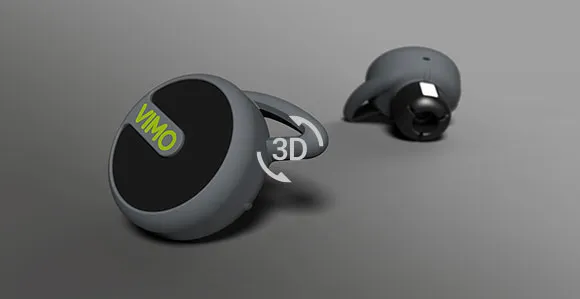
VIMO: Voice assistant delivers training program for lung patients
The in-ear device developed by Albert Ibragimov under the name VIMO is a voice assistant that gives patients with breathing difficulties, such as COPD or asthma, instructions for breathing exercises while measuring their vital signs. The user is guided during the training and individually loaded to prevent overexertion and shortness of breath. At the same time, the data is recorded and is available to the doctor for diagnostic purposes. To record particularly strenuous events such as climbing stairs or heavy lifting, the patient can make a voice recording on the device so that the doctor can better recognize and classify problem situations. The in-ear device measures vital signs and simultaneously gives the user voice instructions for exercise.
In addition to the in-ear device, the complete package consists of an app as well as a mobile and a stationary charging case. The app visualizes the exercises using a virtual trainer and saves statistics. The mobile charging case is used to charge the in-ear device, store it and transfer data to a PC at the doctor's office. The mobile case can be conveniently charged on the stationary charging cradle.
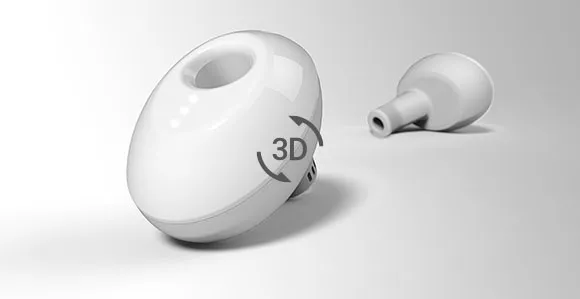
COR makes everyday life easier for people with serious heart disease
While VIMO serves as a rehabilitation assistant specifically for patients with lung diseases by providing voice prompts in the ear as a training program, Luca Nisi's approach with the COR was to develop a product specifically for heart disease and thus make life easier for those affected by tetralogy of Fallot. Tetralogy of Fallot (ToF) is the most common congenital heart defect with around 600 cases per year, accounting for 10% of all congenital heart defects. Symptoms of ToF include a hole in the ventricular septum, a riding aorta, a narrowing of the pulmonary artery or muscle thickening in the right ventricle. 95% of all those affected die before the age of forty. This results in the first special requirement: no stigmatization! As the patients are very young, the device must be as unnoticeable as possible at school, university or work.

Young target group requires a particularly discreet design
Continuous measurement of vital parameters is important for these patients. With COR, the in-ear device pursued by Luca Nisi, all essential values - heart rate variability, blood pressure and oxygen saturation in the blood - can be measured discreetly. They transmit the data to the cardiologist so that the attending physician has a comprehensive overview of his patient's condition. This means that patients no longer have to travel long distances and wait for follow-up care. If the values are conspicuous, the doctor can classify them better in context.
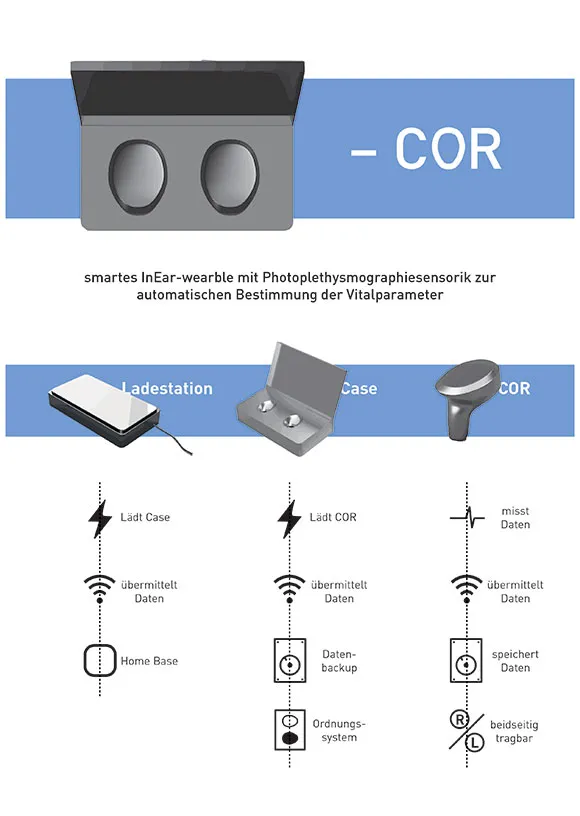
High demands on in-ear wearables
Both concepts were faced with high demands on the in-ear wearables. The product had to be easy and stable to attach to the ear so that it could not be lost during light sporting activities, for example. A high level of wearing comfort should be guaranteed for the patient through an optimum ergonomic fit and the use of soft materials, and pressure points caused by hard edges should be avoided. The product must also not get caught on sweaters or scarves. It should be quick to insert, put into operation and just as easy to remove again. To avoid stigmatizing the patient, it should be as discreet and inconspicuous as possible. The hearing function of the ear should be preserved as completely as possible. Another important aspect of the design development: the device must be able to communicate with a computer.
Unique on the market
Luca Nisi and Albert Ibragimov have met all the requirements in their various concepts. Although there are already wristbands or smartwatches that determine vital signs using the PPG method, the values from these products are very imprecise, as the wrist itself is not ideal for this type of measurement and the freedom of movement of such products can greatly distort the measured values.
Our students' concepts also have a decisive advantage over the products already available, which also measure at the ear using the PPG method: not one of the existing products on the market allows conclusions to be drawn about blood pressure and none measure the values as precisely as CiS intends. These devices are therefore useless for the COR and VIMO target groups.
Medical design for future technology
As little "design freedom" as the two in-ear wearables offered the two students due to their small size and the same place of use, they succeeded impressively in differentiating between the two concepts. Two possible concepts and design directions are available, which can now be further pursued and developed. Will the concepts also convince our cooperation partner CiS? We will report on the further development of the approaches in the blog. We would like to thank our young designers for their interesting concepts!

Frequently asked questions

